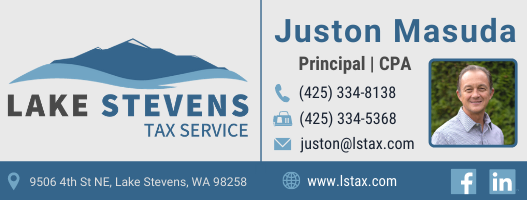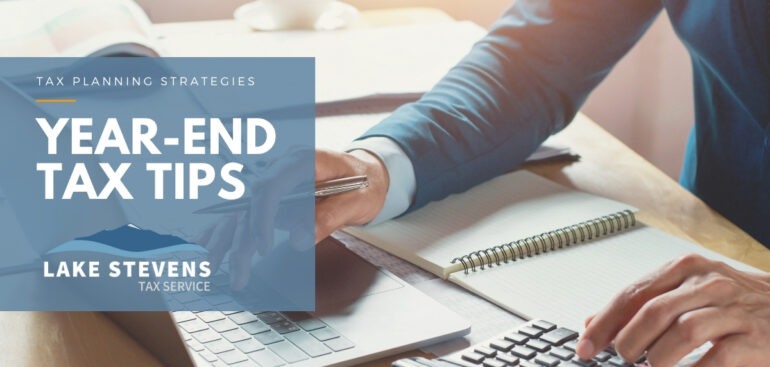Tax planning should be a year-long event, but it often only receives attention at the end of the year.
One of the most overlooked aspects of financial planning is tax minimization, but it is critically important. After all, it’s not how much you make, but how much you keep that matters. Here are a few tax tips for the end of the year to help you lower your taxes, save money when preparing your tax return, and avoid tax penalties.
1. Contribute to retirement accounts
If you haven’t already funded your retirement account for 2022, you have until the tax return filing due date to do so. That’s the deadline for contributions to a traditional IRA, deductible or not, and to a Roth IRA.
- If you have a Keogh or SEP and you get a filing extension to October 16, 2023, you can wait until then to put 2022 contributions into those accounts.
- To start tax-free compounding as quickly as possible, however, don’t dawdle in making contributions.
Making a deductible contribution will help you lower your tax bill this year. Plus, your contributions will compound tax-deferred. It’s hard to find a better deal.
- If you put away $5,000 a year for 20 years in an investment with an average annual 8% return, your $100,000 in contributions will grow to $247,000.
- The same investment in a taxable account would grow to only about $194,000 if you’re in the 25% federal tax bracket (and even less if you live in a state with a state income tax to bite into your return).
To qualify for the full annual IRA deduction in 2022, you must:
- not be eligible to participate in a company retirement plan, or
- if you are eligible, you must have adjusted gross income of $68,000 or less for singles, or $109,000 or less for married couples filing jointly.
- If you are not eligible for a company plan but your spouse is, your traditional IRA contribution is fully-deductible as long as your combined gross income does not exceed $204,000.
For 2022, the maximum IRA contribution you can make is $6,000 ($7,000 if you are age 50 or older by the end of the year). For self-employed persons, the maximum annual addition to SEPs and Keoghs for 2022 is $61,000.
Although choosing to contribute to a Roth IRA instead of a traditional IRA will not cut your 2022 tax bill—Roth contributions are not deductible—it could be the better choice because all withdrawals from a Roth can be tax-free in retirement.
- Withdrawals from a traditional IRA are fully taxable in retirement. To contribute the full $6,000 ($7,000 if you are age 50 or older by the end of 2022) to a Roth IRA, you must earn $129,000 or less a year if you are single or $204,000 if you’re married and file a joint return.
The amount you save for making a contribution will vary. If you are in the 25% tax bracket and make a deductible IRA contribution of $6,000, you will save $1,500 in taxes the first year. Over time, future contributions will save you thousands, depending on your contribution, income tax bracket, and the number of years you keep the money invested.
2. Itemize your tax deductions
It’s easier to take the standard deduction, but you may save a bundle if you itemize, especially if you are self-employed, own a home or live in a high-tax area.
- Itemizing is worth it when your qualified expenses add up to more than the 2022 standard deduction of $12,950 for most singles and $25,900 for most married couples filing jointly.
- Many deductions are well known, such as those for mortgage interest and charitable donations.
- You can also deduct the portion of medical expenses that exceed 7.5% of your adjusted gross income for 2022.
3. Don’t shy away from a home office tax deduction
The eligibility rules for claiming a home office deduction have been loosened to allow more self-employed filers to claim this break. People who have no fixed location for their businesses can claim a home office deduction if they use the space for administrative or management activities, even if they don’t meet clients there.
- As always, you must use the space exclusively for business.
- Many taxpayers have avoided the home office tax deduction because it has been regarded as a red flag for an audit. If you legitimately qualify for the deduction, however, there should be no problem.
- You are entitled to write off expenses that are associated with the portion of your home where you exclusively conduct business (such as rent, utilities, insurance and housekeeping). The percentage of these costs that is deductible is based on the square footage of the office to the total area of the house.
- A middle-class taxpayer who uses a home office and pays $1,000 a month for a two-bedroom apartment and uses one bedroom exclusively as a home office can easily save $1,000 in taxes a year. People in higher tax brackets with greater expenses can save even more.
One home office trap that used to scare away some taxpayers has been eliminated.
- In the past, if you used 10% of your home for a home office, for example, 10% of the profit when you sold did not qualify as tax-free under the rules that let homeowners treat up to $250,000 of profit as tax-free income ($500,000 for married couples filing joint returns).
- Since 10% of the house was an office instead of a home, the IRS said, 10% of the profit wasn’t tax-free. But the government has had a change of heart. No longer does a home office put the kibosh on tax-free profit.
- You do have to pay tax on any profit that results from depreciation claimed for the office after May 6, 1997. It’s taxed at a maximum rate of 25%. (Depreciation produces taxable profit because it reduces your tax basis in the home; the lower your basis, the higher your profit.)
4. Make a last-minute estimated tax payment
If you didn’t pay enough to the IRS during the year, you may have a big tax bill staring you in the face. Plus, you might owe significant interest and penalties, too.
- According to IRS rules, you must pay 100% of last year’s tax liability or 90% of this year’s tax or you will owe an underpayment penalty.
- If your adjusted gross income for 2021 was more than $150,000, you have to pay more than 110% of your 2021 tax liability to be protected from a tax year 2022 underpayment penalty.
If you make an estimated payment by January 15, you can erase any penalty for the fourth quarter, but you still will owe a penalty for earlier quarters if you did not send in any estimated payments back then.
But, if your income windfall arrived after August 31, 2022, you can file Form 2210: Underpayment of Estimated Tax to annualize your estimated tax liability, and possibly reduce any extra charges.
A note of caution: Try not to pay too much. It’s better to owe the government a little rather than to expect a refund. Remember, the IRS doesn’t give you a dime of interest when it borrows your money.
5. Organize your records for tax time
Good organization may not cut your taxes. But there are other rewards, and some of them are financial. For many, the biggest hassle at tax time is getting all of the documentation together. This includes last year’s tax return, this year’s W-2s and 1099s, receipts and so on.
How do you get started?
- Print out a tax checklist to help you gather all the tax documents you’ll need to complete your tax return.
- Keep all the information that comes in the mail in January, such as W-2s, 1099s and mortgage interest statements. Be careful not to throw out any tax-related documents, even if they don’t look very important.
- Collect receipts and information that you have piled up during the year.
- Group similar documents together, putting them in different file folders if there are enough papers.
- Make sure you know the price you paid for any stocks or funds you have sold. If you don’t, call your broker before you start to prepare your tax return.
- Know the details on income from rental properties. Don’t assume that your tax-free municipal bonds are completely free of taxes. Having this type of information at your fingertips will save you another trip through your files.
6. File electronically
Electronic filing works best if you expect a tax refund. Because the IRS processes electronic returns faster than paper ones, you can expect to get your refund three to six weeks earlier. If you have your refund deposited directly into your bank account or IRA, the waiting time is even less.
There are other advantages to e-filing besides a fast refund:
- The IRS checks your return to make sure that it is complete, which increases your chances of filing an accurate return. Less than 1% of electronic returns have errors, compared with 20% of paper returns.
- The IRS also acknowledges that it received your return, a courtesy you don’t get even if you send your paper return by certified mail. That helps you protect yourself from the interest and penalties that accrue if your paper return gets lost.
If you owe money, you can file electronically and then wait until the federal tax filing deadline to send in a check along with Form 1040-V. You may be able to pay with a credit card or through a direct debit.
- With a credit card, expect to pay a service charge of as much as 2.5%.
- With direct debit, you may delay the debiting of your bank account until the actual filing deadline.
Get Expert Tax Advice
There’s a lot to think about when it comes to tax planning. That’s why it often makes sense to talk to a tax professional who can evaluate your situation and help you determine if any year-end moves make sense for you.
Contact Lake Stevens Tax Service or call us at (425) 334-8138 with any questions about these important tax tips that you can use now to save money!


